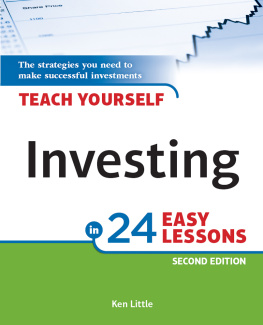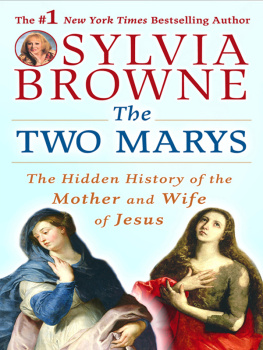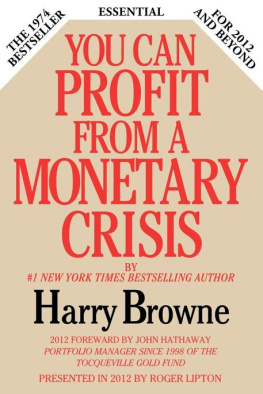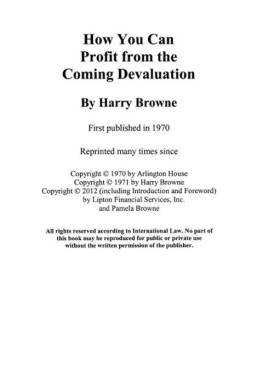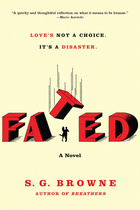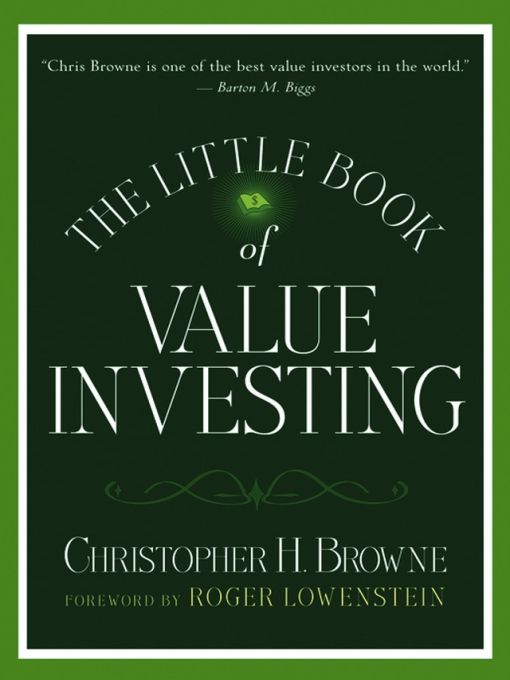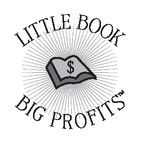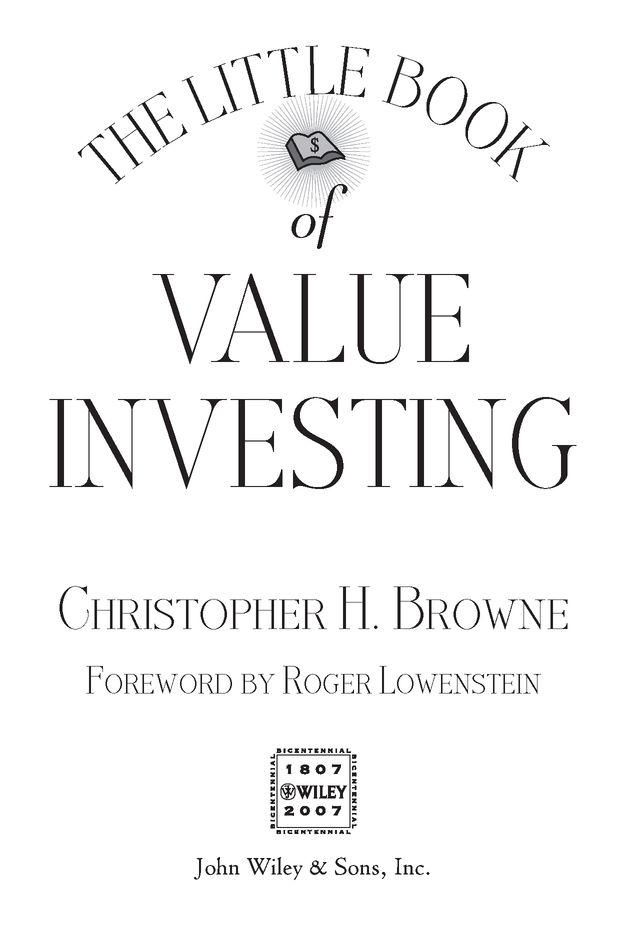Table of Contents
More Praise forThe Little Book of Value Investing
A lot of wisdom in a little book. This is an essential read for any investor of any size. It lays out the basics of value investing in a clear and lucid primer. I am assigning it as homework to all of our shareholders!
Charles M. Royce, President, The Royce Funds
Value investors want a lot for their money. Chris Browne explains whyand how to do it. This short and enjoyable book gives investors lots of value for the time they invest.
Charles D. Ellis, Author, Capital
Chris Browne is one of the giants in the field of global value investing. Well worth reading!
Martin J. Whitman, Third Avenue Funds
Chris Browne is an outstanding practitioner of wealth creation.
Bruce Greenwald, Columbia Business School
Chris Browne provides an engaging expos on the principles and processes that have made him an industry legend. A must read for investors of any persuasion and experience.
Lewis Sanders, Chairman and CEO, AllianceBernstein
Little Book Big Profits Series
In the Little Book Big Profits series, the brightest icons in the financial world write on topics that range from tried-and-true investment strategies weve come to appreciate to tomorrows new trends.
Books in the Little Book Big Profits series include:
The Little Book That Beats the Market, where Joel Greenblatt, founder and managing partner at Gotham Capital, reveals a magic formula that is easy to use and makes buying good companies at bargain prices automatic, enabling you to successfully beat the market and professional managers by a wide margin.
The Little Book of Value Investing, where Christopher Browne, managing director of Tweedy, Browne Company, LLC, the oldest value investing firm on Wall Street, simply and succinctly explains how value investing, one of the most effective investment strategies ever created, works, and shows you how it can be applied globally.
The Little Book of Index Investing, where Vanguard Group Founder John C. Bogle shares his own time-tested philosophies, lessons, and personal anecdotes to explain why outperforming the market is an investor illusion, and how the simplest of investment strategiesindexingcan deliver the greatest return to the greatest number of investors.
Foreword
MY FIRST STOCKPoloron Productswas a clinker. My father bought 400 shares for me in the early 1960s. I never knew what it made or what it did. But I adopted the custom of checking the price each morning. (In the technologically distant era of my youth, believe it or not, people still relied on the newspaper to discover what the market had done the previous day.) It amazed me that an advance of merely 1/8 would enrich me by $50, a prodigious sum. The stock went down as often as it went up, but I tended to disregard the declinesit was only paper, right?while experiencing a momentary thrill on the advances. I remember asking my father what caused the stock to go up. His answer made sense, but only up to a certain point. Poloron was in businessthat much I understood. And the more profitable the business, the more that people would pay for the stock. Butand here was the rock on which my comprehension founderedthe profits didnt go to the stock. They went to the company. The quotations I perused in the morning Times had no direct linkof this much I was sureto the revenue that materialized in the companys coffers. So why did the shares advance? My father said something about the profits conferring on the company the ability to pay the shareholders dividends. But here again, Polorons discretion seemed complete. They did not have to pay us, the shareholders, each of whom I imagined to be a lad much like myself, anything at all. We were at their mercy. That the price (or so my father said) responded faithfully to the developments in the business, I ascribed to the peculiar character of the stock market. I understood it, if at all, as a sort of cheering section knit by a ritualized set of financial rules. The mysterious people who determined the price of my 400 shares were apparently honor-bound to do so in accordance with the outlook for Polorons profits, regardless of the fact that I and the other stockholders might never see them.
I do not remember my father ever telling me he sold the stock, but one day he must have done so. I seemed to know that the 400 shares were no longer my 400 and Poloron ceased to be my concern. Still, it left me with a certain mind-set. I did not earn a profit, but I gained a habit that, when I started writing about, as well as buying, stocks, turned out to be ingrained.
Wall Street teaches, variously, that stocks are driven by all manner of concernsby war and peace, by politics, by economics, by the market trend, and so forth. My inheritance was a credo: Stocks are driven by the underlying earnings.
I thought about this while reading Christopher Brownes estimable synopsis of value investing. It is a clich that, when it comes to rooting for a sports team, we inherit the passions of our fathers. It is similarly true that our parents economic prejudices also mold our own. Our first financial instructions are those we hear from our folks, most usually the family wage-earner (in my generation, the dad). We hear them with young, impressionable ears and a lifetime is insufficient to shake them.
In Brownes case, this was all to the good. He gives, here, just a modest hint of his financial blood lines. His father, Howard Browne, was a stockbroker who, in 1945, helped to found Tweedy, Browne and Reilly, the firm where the author has long been a principal. To call the founding generation brokers is a gross generalization. They were Wall Street specialists of a peculiar ken, who put together buyers and sellers of shares in small, thinly traded securities for which no broad market existed. By definition, then, their customers were those who were drawn to the underlying value of a stock as distinct from the market trendwith respect to these stocks, remember, there was no active market. Indeed, one of the firms early and most active clients was Benjamin Graham, the pioneering professor, financial writer, and money manager.
Graham essentially created the discipline of value investing, and his disciples became its first practitioners. Among this small but devoted tribe, Tweedy, Browne was immediately established as virtually hallowed ground. The firm took office at 52 Wall Street, down the hall from Graham himself (the better to get his business and, presumably, his counsel). It eventually expanded from brokerage into money managementthat is, to investingin which it naturally employed Grahams approach.
Value investing is easy to describe, even if it is not always easy to execute in practice. It consists of buying securities for less than their intrinsic worthof buying them on the basis of their underlying business value, as distinct from what is happening at the superficial level of the stock market. (Remember those mysterious fellows who bid up Polorons stock on the basis of its earnings? They were onto something.)



